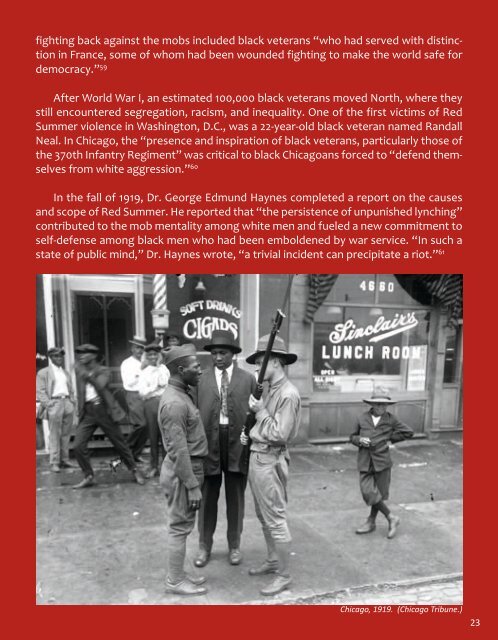Create successful ePaper yourself
Turn your PDF publications into a flip-book with our unique Google optimized e-Paper software.
fight<strong>in</strong>g back aga<strong>in</strong>st the mobs <strong>in</strong>cluded black veterans “who had served with dist<strong>in</strong>ction<br />
<strong>in</strong> France, some of whom had been wounded fight<strong>in</strong>g to make the world safe for<br />
democracy.” 59<br />
After World War I, an estimated 100,000 black veterans moved North, where they<br />
still encountered segregation, racism, and <strong>in</strong>equality. One of the first victims of Red<br />
Summer violence <strong>in</strong> Wash<strong>in</strong>gton, D.C., was a 22-year-old black veteran named Randall<br />
Neal. In Chicago, the “presence and <strong>in</strong>spiration of black veterans, particularly those of<br />
the 370th Infantry Regiment” was critical to black Chicagoans forced to “defend themselves<br />
from white aggression.” 60<br />
In the fall of 1919, Dr. George Edmund Haynes completed a report on the causes<br />
and scope of Red Summer. He reported that “the persistence of unpunished lynch<strong>in</strong>g”<br />
contributed to the mob mentality among white men and fueled a new commitment to<br />
self-defense among black men who had been emboldened by war service. “In such a<br />
state of public m<strong>in</strong>d,” Dr. Haynes wrote, “a trivial <strong>in</strong>cident can precipitate a riot.” 61<br />
Chicago, 1919. (Chicago Tribune.)<br />
23


